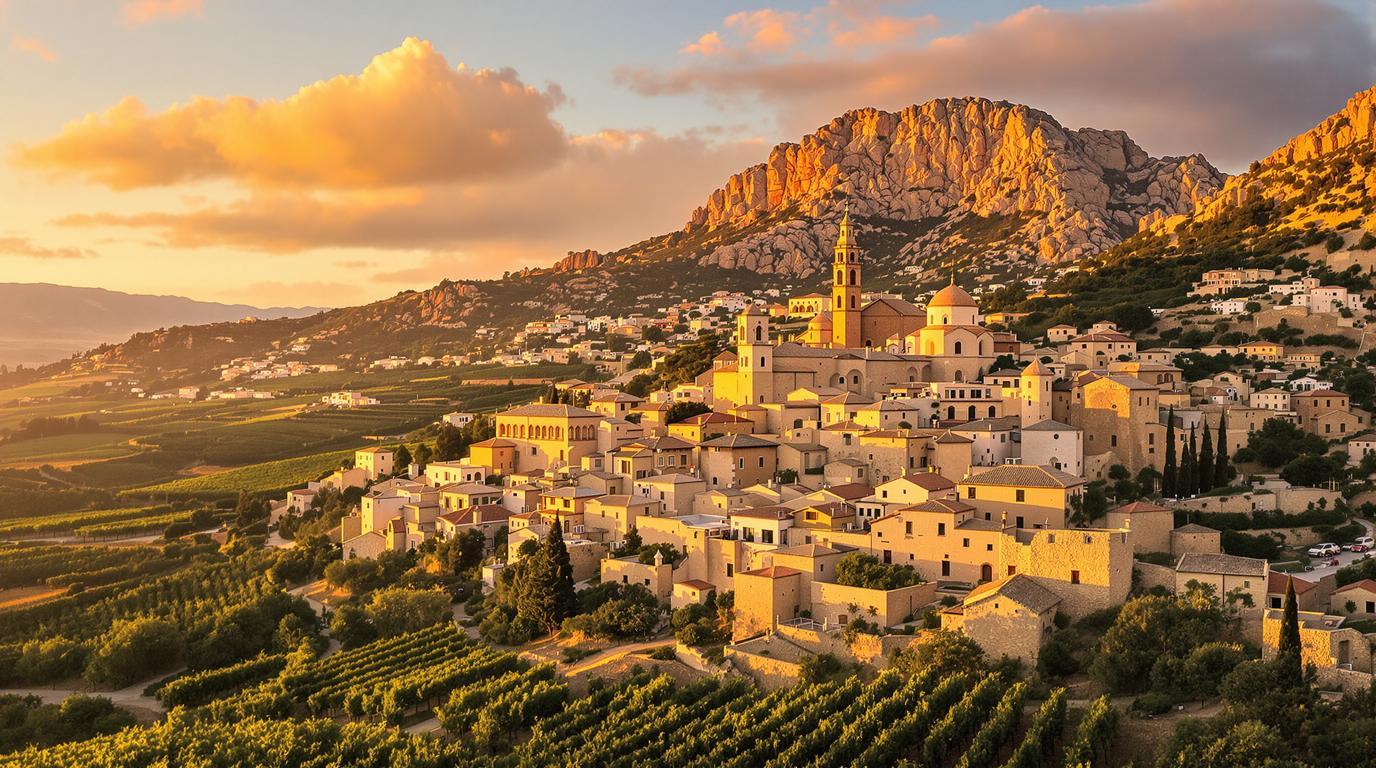Hidden between the Mediterranean and the majestic Canigou mountain, Brouilla might be the most enchanting French village you’ve never heard of. This sun-drenched hamlet in the Pyrénées-Orientales department harbors centuries of Catalan heritage, vibrant vineyards, and golden stone architecture that glows at sunset — all while remaining wonderfully off the typical tourist radar.
A crossroads of Catalan and French cultures
With just over 1,600 residents, Brouilla embodies the authentic charm of southern France’s borderlands. The village streets whisper stories of its complex identity — neither fully French nor Spanish, but distinctly Catalan. Local elder Marcel Colomines explains,
“Our grandparents spoke Catalan at home and French at school. Today, we keep both languages alive through our festivals and traditions.”
Golden light that captivates photographers
What makes Brouilla truly special is its extraordinary light. Situated between sea and mountain, the village bathes in a golden glow during the magic hours that has drawn landscape photographers for generations. The warm Mediterranean sunshine reflects off ancient stone walls, creating an ethereal atmosphere similar to what you might find in lesser-known Caribbean paradises.
Vineyard treasures hiding in plain sight
The surrounding countryside is blanketed with vineyards producing exceptional wines that locals have treasured for centuries. Unlike its famous neighbors in Bordeaux or Burgundy, Brouilla’s wines remain a delicious secret. At Domaine Sol Payre, fifth-generation winemaker Philippe Payre offers tastings of his robust reds and minerally whites in a 300-year-old stone cellar.
A hiker’s dream with Canigou views
Outdoor enthusiasts will find paradise in the network of trails surrounding Brouilla. The imposing silhouette of Mount Canigou — the sacred mountain of Catalonia — dominates the horizon, much like certain iconic Swiss Alpine peaks. Local hiking guide Marie Descamps shares,
“Each morning, the mountain wears a different face. Sometimes shrouded in mist, sometimes crystal clear against the blue sky.”
Medieval mysteries waiting to be discovered
History buffs will appreciate Brouilla’s ancient church of Saint Michel, with parts dating back to the 12th century. The weathered stones tell tales of religious pilgrimages and border conflicts. This architectural gem remains relatively unknown compared to France’s most celebrated medieval villages.
Spring awakening: wildflower spectacle
April through June transforms Brouilla’s surroundings into a botanical wonderland. Poppies, wild orchids, and Mediterranean herbs carpet the hillsides in a riot of color and fragrance. The climate here remains pleasantly warm during spring, unlike the rainy conditions found in northern Europe or certain tropical destinations that maintain perfect temperatures year-round.
Culinary delights with Catalan flair
Brouilla’s cuisine reflects its border identity with dishes like “botifarra amb mongetes” (white beans and sausage) and fresh seafood from nearby Mediterranean ports. The Wednesday morning market brings local farmers selling seasonal produce, cheeses, and olives pressed from trees that have grown here since Roman times.
Mediterranean beaches within reach
Just 10 kilometers from Brouilla lie the golden beaches of the Mediterranean coast. Unlike the famous French Riviera, these shores remain relatively uncrowded, offering crystal-clear waters that rival those found in Egypt’s renowned diving destinations.
Where to stay: authentic accommodations
While Brouilla itself offers limited accommodation, nearby guesthouses provide authentic Catalan hospitality. Local hostess Claudine Rigau notes,
“Visitors who stay with us don’t want the typical tourist experience. They come to live as we do, even if just for a week.”
As the sun sets behind Mount Canigou, painting Brouilla’s stone walls in deep amber hues, you’ll understand why this hidden corner of France captures the hearts of those fortunate enough to discover it. In this timeless village where Catalan traditions thrive and Mediterranean landscapes inspire, you’ll find the authentic southern France experience that mass tourism hasn’t yet transformed.
